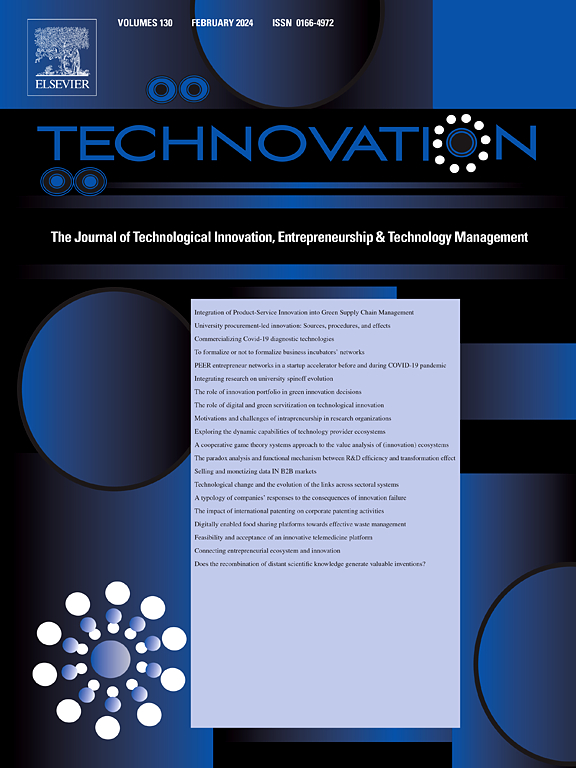What motivates the collaborative innovation relationship in infrastructure projects from dynamic network perspective
IF 10.9
1区 管理学
Q1 ENGINEERING, INDUSTRIAL
引用次数: 0
Abstract
The scale and complexity of infrastructure projects, involving numerous stakeholders, present significant technical challenges. To effectively address these challenges, inter-organizational collaborative innovation is essential. However, there is little research on the underpinnings of collaborative innovation relationship (CIR) in infrastructure projects from a dynamic network perspective. This study aims to explore the mechanisms driving the evolution of CIR through longitudinal data from infrastructure projects implemented in China between 2008 and 2023. CIR networks are constructed based on the Derwent Innovation Index (DII) database, and their evolutionary characteristics are analyzed via social network analysis (SNA). A multiple regression quadratic assignment procedure (MRQAP) is employed to examine determinants of CIR networks, with a specific focus on the evolution of both independent and interaction effects of proximity. The results indicate that CIR in infrastructure projects evolves into a hub-and-spoke feature across three distinct stages. Notably, the proliferation of intelligent construction technology emerges as a significant development. Enterprises serve as core players and bridges, while research institutions and universities take the leadership in innovation. Furthermore, the influence of geographical proximity on CIR networks diminishes over time, whereas social proximity becomes increasingly influential. The relationships between geographical, institutional, and organizational proximity exhibit dynamic changes, characterized by both complementarity and substitutability. These findings contribute to the existing literature on dynamic collaborative relationships among stakeholders in infrastructure projects innovation and provide practical insights for enhancing inter-organizational collaboration in such projects.
动态网络视角下基础设施项目协同创新关系的动因
基础设施项目的规模和复杂性,涉及众多的利益相关者,提出了重大的技术挑战。为了有效地应对这些挑战,组织间的协作创新至关重要。然而,基于动态网络视角的基础设施项目协同创新关系的基础研究却很少。本研究旨在通过2008年至2023年间中国实施的基础设施项目的纵向数据,探讨推动CIR演变的机制。基于德文特创新指数(Derwent Innovation Index, DII)数据库构建CIR网络,并通过社会网络分析(social network analysis, SNA)分析其演化特征。采用多元回归二次分配程序(MRQAP)来检查CIR网络的决定因素,特别关注邻近的独立和相互作用效应的演变。结果表明,基础设施项目的CIR在三个不同的阶段演变为中心辐状特征。值得注意的是,智能建筑技术的普及成为一项重大发展。企业是核心主体和桥梁,科研机构和高校引领创新。此外,地理邻近性对CIR网络的影响随着时间的推移而减弱,而社会邻近性的影响越来越大。地理、制度和组织接近性之间的关系呈现动态变化,具有互补性和可替代性。这些发现有助于现有文献对基础设施项目创新中利益相关者之间动态协作关系的研究,并为加强此类项目中的组织间协作提供了实践见解。
本文章由计算机程序翻译,如有差异,请以英文原文为准。
求助全文
约1分钟内获得全文
求助全文
来源期刊

Technovation
管理科学-工程:工业
CiteScore
15.10
自引率
11.20%
发文量
208
审稿时长
91 days
期刊介绍:
The interdisciplinary journal Technovation covers various aspects of technological innovation, exploring processes, products, and social impacts. It examines innovation in both process and product realms, including social innovations like regulatory frameworks and non-economic benefits. Topics range from emerging trends and capital for development to managing technology-intensive ventures and innovation in organizations of different sizes. It also discusses organizational structures, investment strategies for science and technology enterprises, and the roles of technological innovators. Additionally, it addresses technology transfer between developing countries and innovation across enterprise, political, and economic systems.
 求助内容:
求助内容: 应助结果提醒方式:
应助结果提醒方式:


